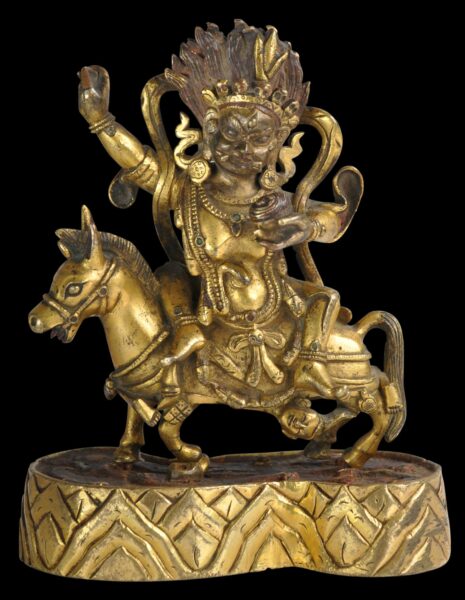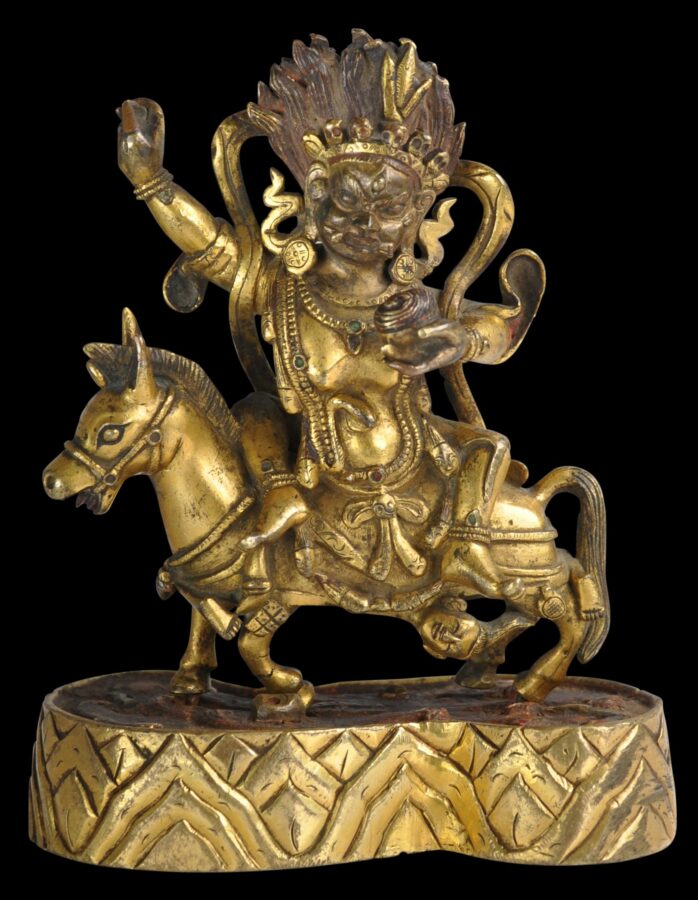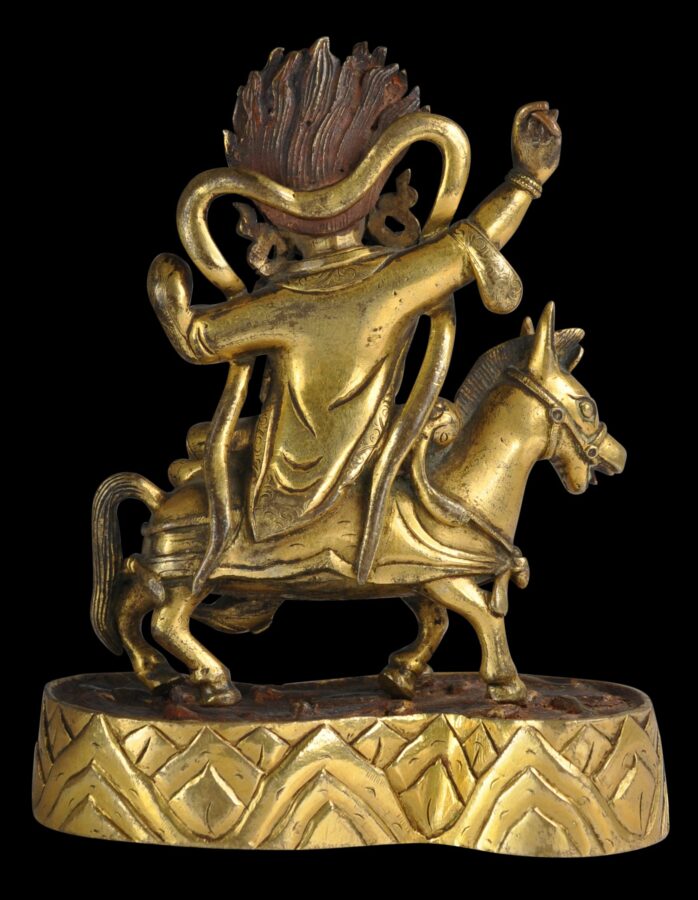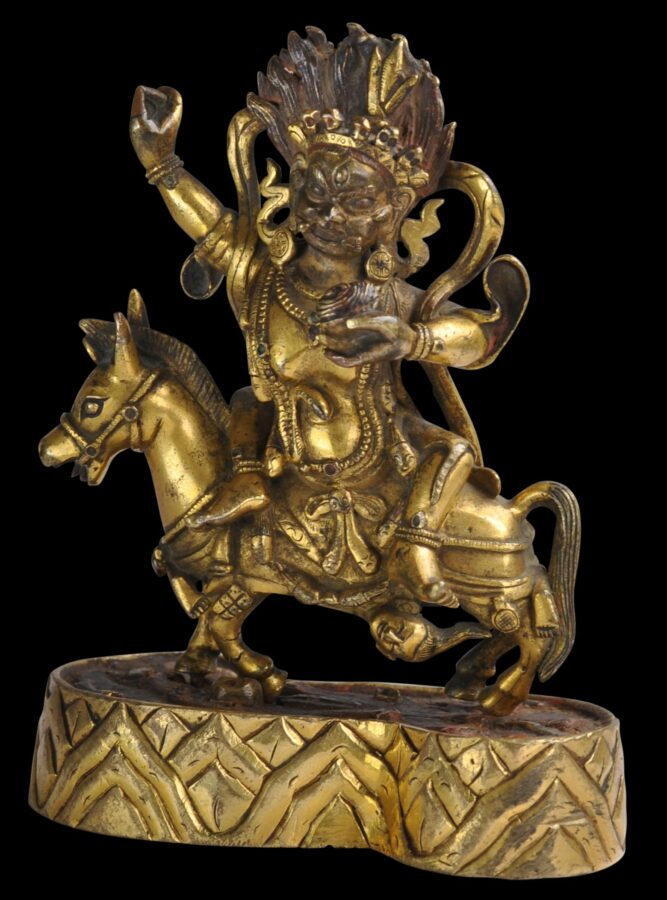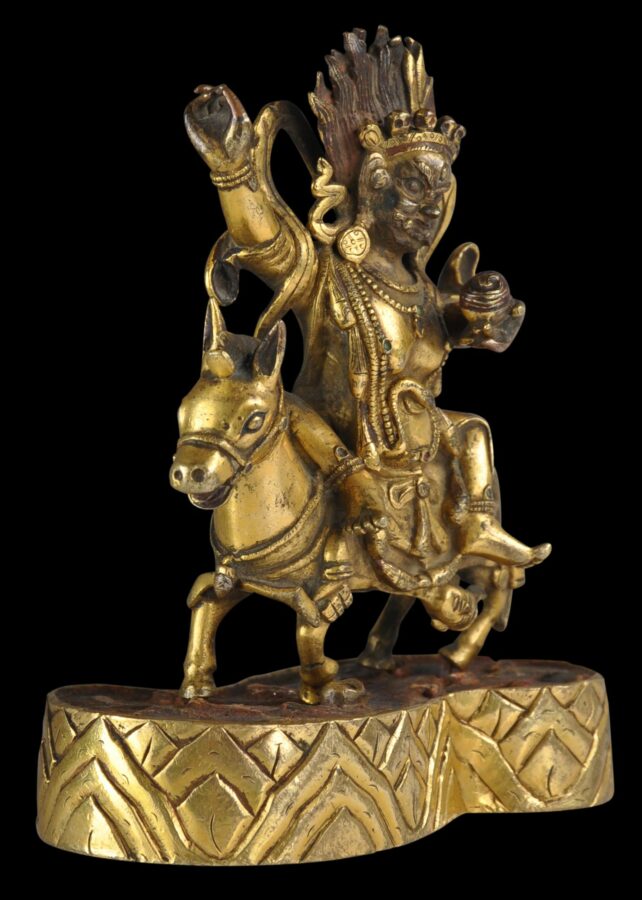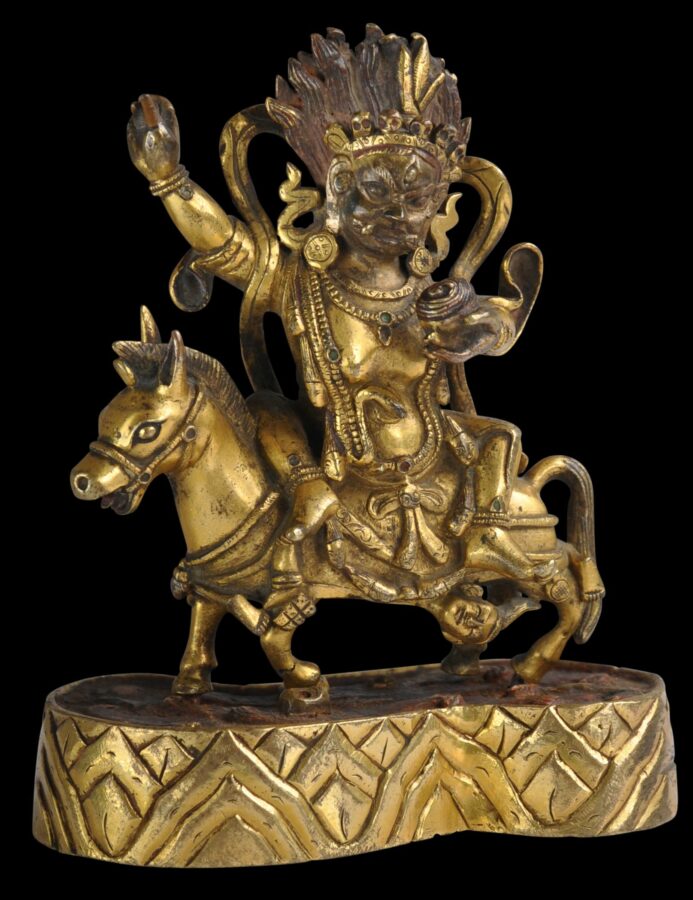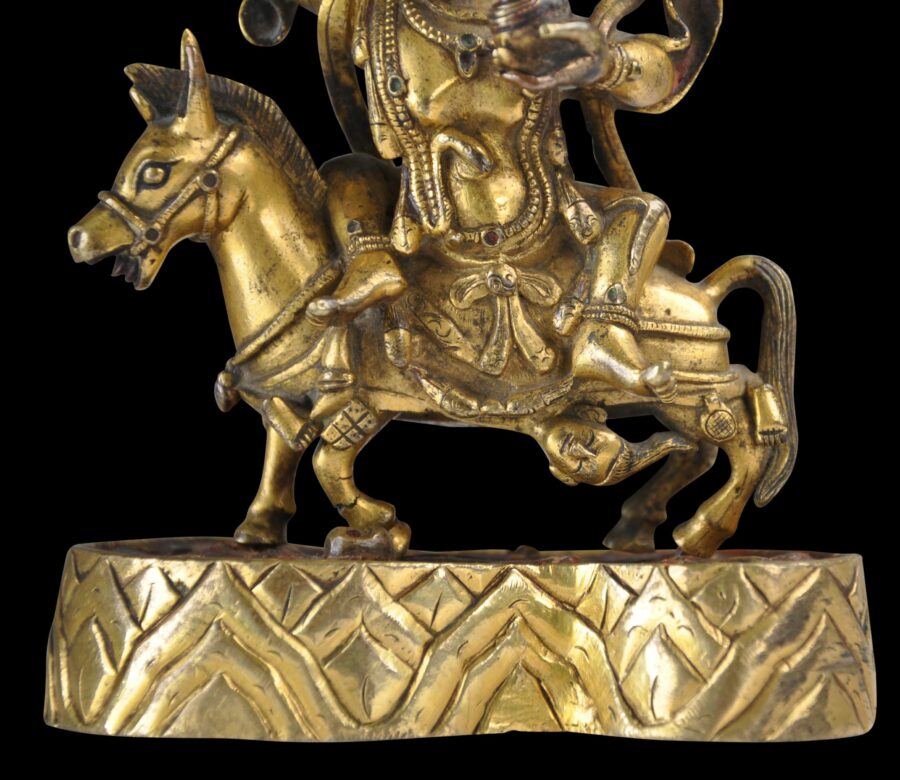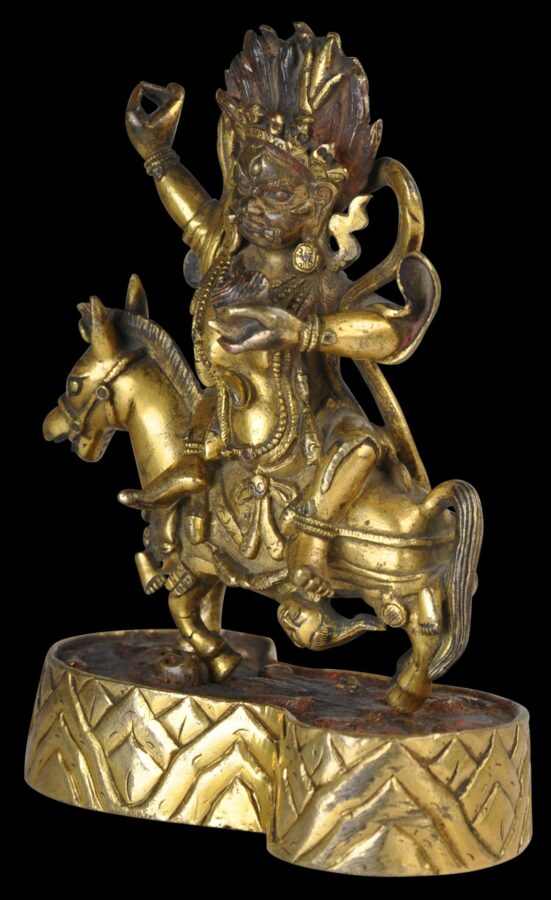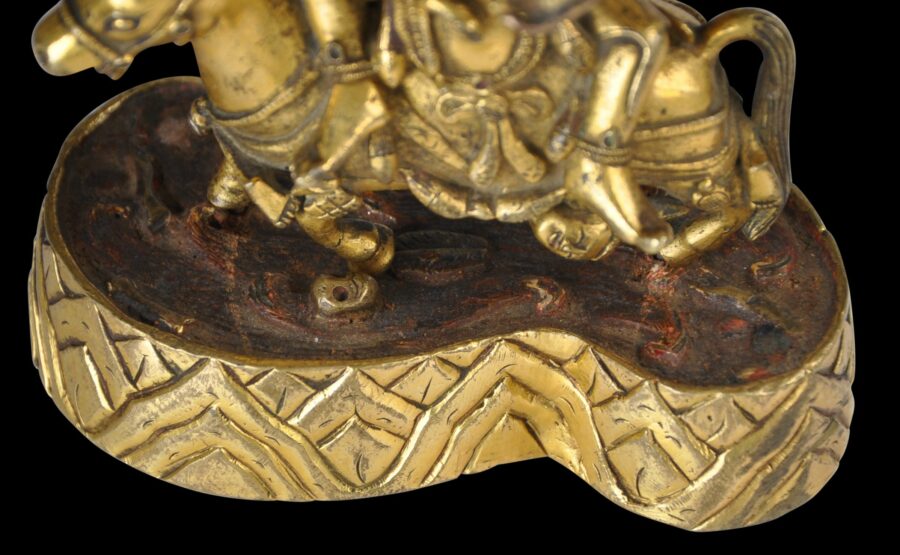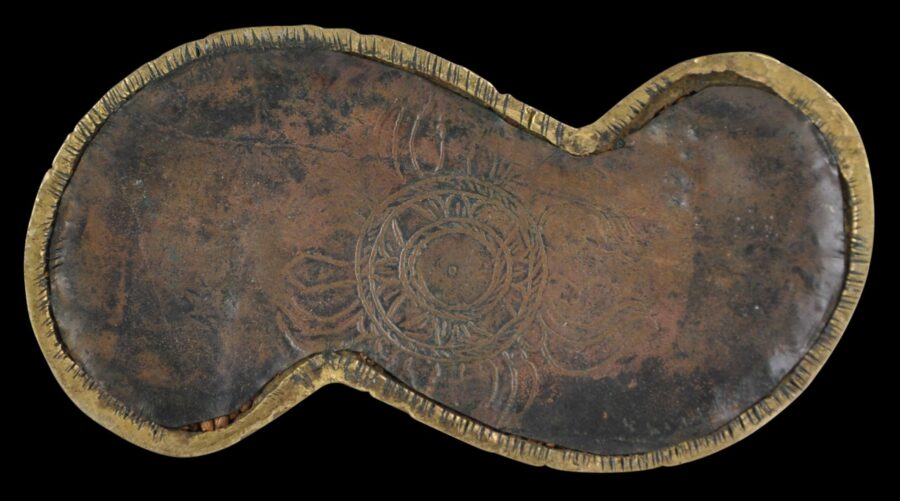This fine image of Palden Lhamo is of gilded, cast and chiselled copper alloy. The deity is shown riding side saddle on a Himalayan mule with its characteristically short legs.
Palden Lhamo is one of the more wrathful female deities of Tibetan Buddhism. Known also as Magzor Gyalmo in Tibetan (although some researchers argue that Palden Lhamo and Magzor Gyalmo are different deities but with the former being an attendent to the latter), , she is a Tibetan-ised version of the Indian Hindu deity Sri Devi.
Among her many roles, she is the special protector of the city of Lhasa and Tibet more generally, the Gelukpa Order, and the Dalai Lamas. She is the only female among the traditional ‘Eight Guardians of the Law’.
Tradition holds that she was invited from India to Tibet around the eleventh century and that she was once queen of the demons of Sri Lanka. She killed her only son after a dispute with her demon husband. She then used his flayed skin as the saddle blanket on her mule as can be seen in the image here. She also used his skull as a skull cup of kapala with which to drink his blood.
She rides her mule across a churning sea of blood as seen in this image.and laying near one of the mule’s hooves is a skull, as well as what appears to be femurs and other bones. Around her shoulders are garlands of snakes, she has a necklace of severed heads, and on her head is a diadem of skulls. She holds the skull cup in her left hand. On her stomach (behind the head of snake) is a sun disk.
Such violent imagery can be interpreted as symbolic of the determination needed to overcome obstacles within the self.
The base and thus the consecration is intact. The base is engraved with a double-dorje motif.
The image is in fine condition and without loss. The main image has been cast separately from the stand with the image slotting neatly into the stand.
References
Kerin, M.R., Artful Beneficence: Selections from the David R. Nalin Himalayan Art Collection, Rubin Museum of Art, 2009.
Pal, P., Himalayas: An Aesthetic Adventure, The Art Institute of Chicago, 2004.


